
Eldred Gregory Peck was an American actor and one of the most popular film stars from the 1940s to the 1970s. In 1999, the American Film Institute named Peck the 12th-greatest male star of Classic Hollywood Cinema.

Scared Stiff is a 1953 American horror paranormal semi-musical comedy film directed by George Marshall and starring Dean Martin and Jerry Lewis. One of the 17 films made by the Martin and Lewis team, it was released on April 27, 1953 by Paramount Pictures. It is the fourth screen adaptation of the 1909 play The Ghost Breaker by Paul Dickey and Charles W. Goddard, previously filmed under that title in 1914 and 1922 and as The Ghost Breakers in 1940.
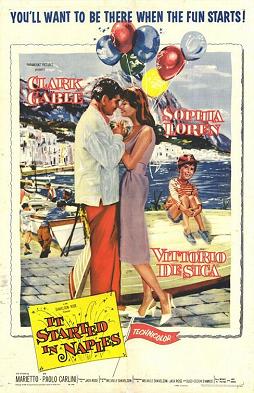
It Started in Naples is a 1960 American romantic comedy film directed by Melville Shavelson and produced by Jack Rose from a screenplay by Suso Cecchi d'Amico, based on the story by Michael Pertwee and Jack Davies. The Technicolor cinematography was directed by Robert Surtees. The film stars Clark Gable, Sophia Loren, Vittorio De Sica and an Italian cast. This was Gable's final film to be released within his lifetime and his last film in color.

The Ghost Breakers is a 1940 American mystery/horror comedy film directed by George Marshall and starring Bob Hope and Paulette Goddard. It was adapted by screenwriter Walter DeLeon as the third film version of the 1909 play The Ghost Breaker by Paul Dickey and Charles W. Goddard.

The Sad Sack is a 1957 comedy film based on the Harvey Comics character of the same title, created by George Baker. The film stars Jerry Lewis and Peter Lorre and was released by Paramount Pictures.
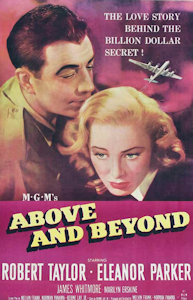
Above and Beyond is a 1952 American World War II film about Lt. Col. Paul W. Tibbets Jr., the pilot of the aircraft that dropped the atomic bomb on Hiroshima in August 1945.

It Happens Every Spring is a 1949 American comedy film directed by Lloyd Bacon and starring Ray Milland, Jean Peters and Paul Douglas.

Sailor Beware is a 1952 American comedy film starring the comedy team of Martin and Lewis and is an adaption of a 1933 Kenyon Nicholson and Charles Robinson play of the same name. It was released on February 9, 1952 by Paramount Pictures. The working title was At Sea with the Navy.
The Stooge is a 1952 American comedy film directed by Norman Taurog and starring the comedy team of Martin and Lewis alongside Polly Bergen and Marion Marshall. The film was released nationally in the United States in February 1953 by Paramount Pictures.
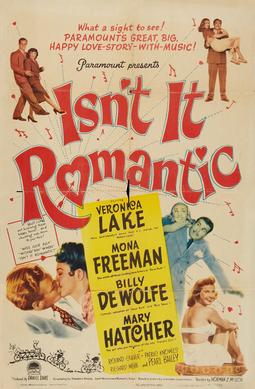
Isn't It Romantic? is a 1948 American comedy musical film from Paramount Pictures, directed by Norman Z. McLeod and starring Veronica Lake and Billy De Wolfe. Supporting actors included Mona Freeman, Richard Webb and Pearl Bailey. Although it takes its title from a 1932 song by Richard Rodgers and Lorenz Hart, it is based on a novel called Gather Ye Rosebuds by Jeannette C. Nolan.

Princess O'Rourke is a 1943 American romantic comedy film directed and written by Norman Krasna, and starring Olivia de Havilland, Robert Cummings and Charles Coburn. Krasna won the 1944 Oscar for Best Original Screenplay.

Busman's Honeymoon is a 1940 British detective film directed by Arthur B. Woods. An adaptation of the 1937 Lord Peter Wimsey novel Busman's Honeymoon by Dorothy L. Sayers, Busman's Honeymoon stars Robert Montgomery, Constance Cummings, Leslie Banks, Googie Withers, Robert Newton and Seymour Hicks as Mervyn Bunter.

I Want You is a 1951 film directed by Mark Robson taking place in America during the Korean War. Gordon E. Sawyer was nominated for the Academy Award for Best Sound.
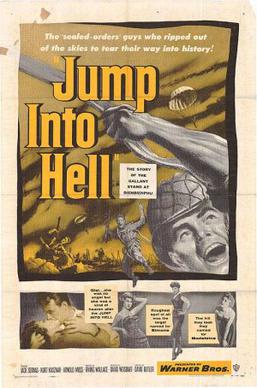
Jump into Hell is a 1955 war film directed by David Butler. The film stars Jacques Sernas and Kurt Kasznar. As the first Hollywood film based on the war in French Indochina, the story is a fictionalized account of the Battle of Dien Bien Phu.
Satellite in the Sky is a 1956 British CinemaScope science fiction film in Warner Color, produced by Edward J. Danziger and Harry Lee Danziger, directed by Paul Dickson, and starring Kieron Moore, Lois Maxwell, Donald Wolfit, and Bryan Forbes. The film was distributed by Warner Bros. Pictures. Special effects were by Wally Veevers, who would later work on Stanley Kubrick's 2001: A Space Odyssey (1968).
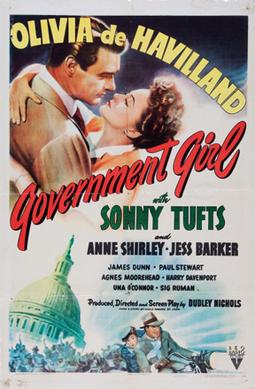
Government Girl is a 1943 American romantic-comedy film, produced and directed by Dudley Nichols and starring Olivia de Havilland and Sonny Tufts. Based on a story by Adela Rogers St. Johns, and written by Dudley Nichols and Budd Schulberg, the film is about a secretary working in a factory during World War II who helps her boss navigate the complex political machinations of government in an effort to build bomber aircraft for the war effort.
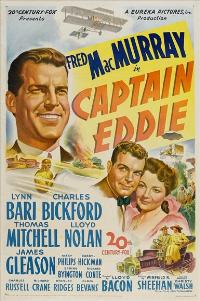
Captain Eddie is a 1945 American drama film directed by Lloyd Bacon, based on Seven Were Saved by "Eddie" Rickenbacker and Lt. James Whittaker's We Thought We Heard the Angels Sing. The film stars Fred MacMurray, Lynn Bari and Charles Bickford. Captain Eddie is a "biopic" of Rickenbacker, from his experiences as a flying ace during World War I to his later involvement as a pioneering figure in civil aviation, and his iconic status as a business leader who was often at odds with labour unions and the government.
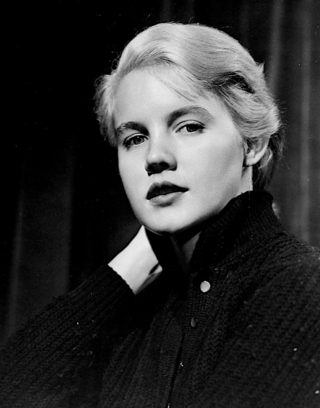
Carroll Baker is an American actress of film, stage, and television. Spanning a career of fifty years, Baker appeared in 66 feature and television films, as well as 16 television appearances and over 15 stage credits, including 3 Broadway productions. Her most prolific role was in Elia Kazan's 1956 film Baby Doll, which earned her a Golden Globe and an Oscar nomination for Best Actress. Throughout her career, she became an established movie sex symbol.
Behind The Mask is a 1946 American comedy-mystery film directed by Phil Karlson and starring Kane Richmond and Barbara Read. It was the second in a series of three films released by Monogram in 1946 starring Richmond as the crimefighter The Shadow, the others being The Shadow Returns and The Missing Lady.
As a nickname, Hap or Haps is commonly short for Henry, Harry, Harold, or Harrison. It may refer to:
















